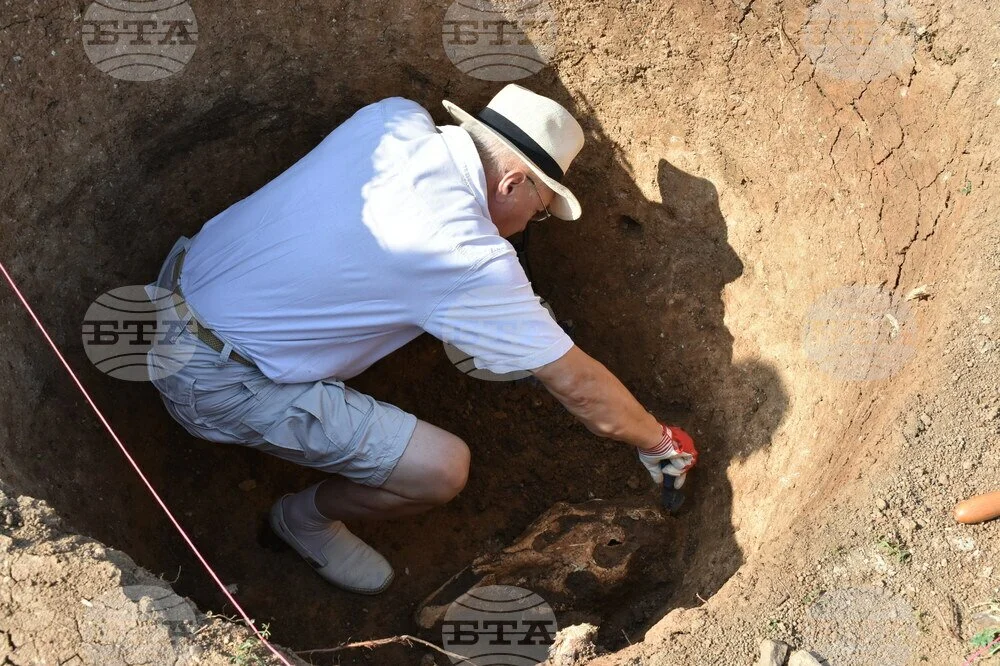Near Ryahovets Fortress in Gorna Oryahovitsa (North-Central Bulgaria), an archaeological site with a cult pit and an animal skull that dates back roughly eight centuries was found. According to expedition leader Iliyan Petrakiev, the archaeologists discovered a 50 cm horse skull facing south in a ritualistic manner. This discovery follows those of a cow skull and another horse skull.
The three-year-old digs near Gorna Oryahovitsa are in an area where 13th-century ritual pits, a necropolis, and a neighborhood have all been discovered. The scientific theory that the region was occupied by a late nomadic population that was undergoing Christianization is supported, in Petrakiev's opinion, by this year's discoveries.
He claimed that the burials found are peculiar. The upper limbs of the deceased are in various attitudes that are not typical of Christian burial practices, and close by are ritual pits filled with animal remains. They are facing southwest-northeast.
One theory holds that the Kumans, a tribe that sided with the Bulgarian kings of the time in the late 12th and early 13th century, lived in the region. In order to support the notion, the discoveries will undergo additional analysis in addition to the archaeological one.
In order to maintain its integrity, restorer Rouen Hadzhinikolov of the Veliko Tarnovo Regional Museum of History pulled the horse skull from the hole. The discovery will be examined in the National Museum of Natural History and, if feasible, displayed at the Gorna Oryahovitsa History Museum.
Burnt house beams, another discovery from this year's excavation efforts at the location, are significant since a wood analysis can help date them.
Archaeology students from the University of Veliko Tarnovo are working on the excavation. Gorna Oryahovitsa Municipality is providing funding in the amount of BGN 20,000.







